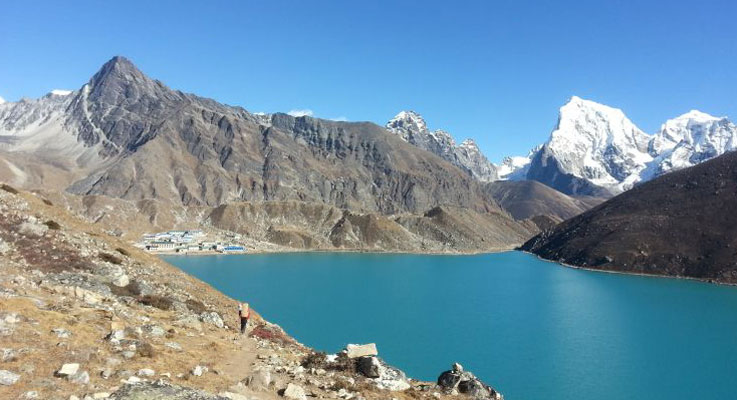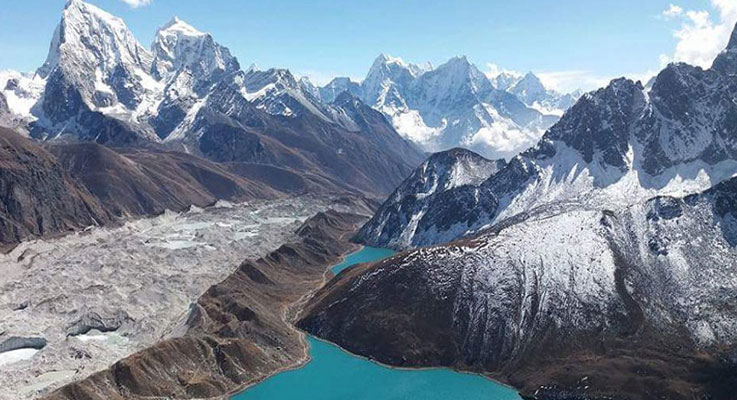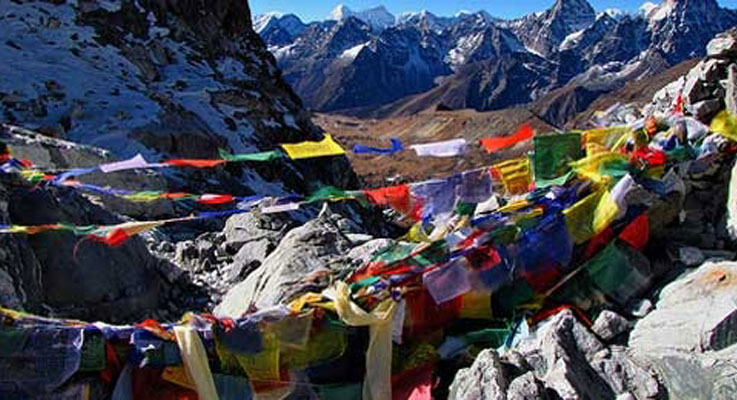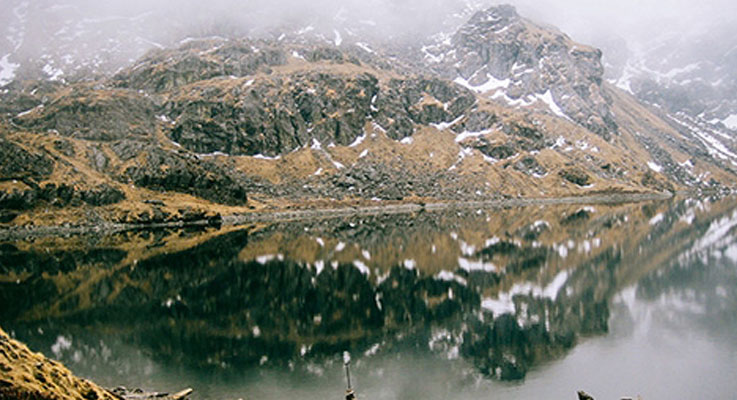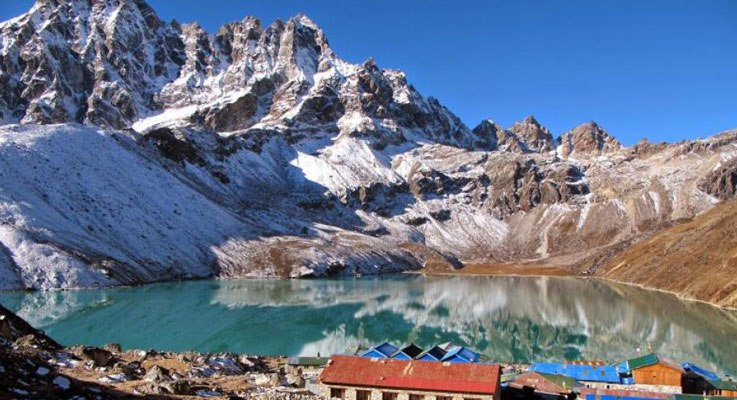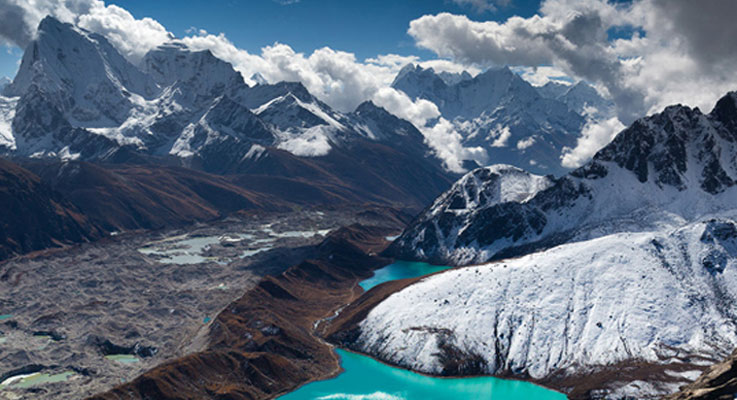-
Day 1
Arrival in Kathmandu (1,345m/4,413 ft)
Upon arriving at at Tribhuwan International Airport in Kathmandu, you will be received by our airport representatives who will warmly greet you and transfer to the hotel on a private tourist vehicle. We provide 3-star accommodation in the city and we arrange for a trip briefing with dinner in the evening.
-
Day 2
Visit old town of Kathmandu
A professional guide and vehicle are provided for a day of sightseeing in and around Kathmandu city. We visit some of the UNESCO World Heritage Sites in the city along with other interesting cultural monuments that dot the valley. These include Boudhanath Stupa (the largest Buddhist shrines in the world), Pashupatinath (the holiest Hindu temple in the world), Durbar Squares (Palaces and fortresses of medieval Kings), along with other popular cultural attractions. We get to observe the lifestyle of Nepalese people, holy sadhus and monks, fascinating history as well as awe-inspiring architecture.
-
Day 3
Fly from Kathmandu to Lukla (2,800m/9,186 ft). Trek to Phakding (2,610m/8,563 ft)
Early in the morning, you will be transferred to the airport in Kathmandu for a scenic 30-minute flight to Lukla. The airport guide will brief you and introduce our porters before we begin our trek towards Phakding (2,610m). There will be some time to explore the village while our Sherpa crew sorts and loads trekking equipment and baggage. The trek starts with a descent to Dudh Kosi River, from where the wider trail leads us to the village of Ghat (2,550m), and then to Phakding on an easy-paced walk.
-
Day 4
Trek from Phakding to Namche Bazar (3,440m/11,286 ft)
Walking along the shores of Dudh Kosi, we get to cross the serene river many times on exhilarating suspension bridges decorated with prayer flags. A little further, we enter Sagarmatha National Park from where the trail climbs steeply with picturesque sights. After trekking for a few hours, we reach Namche Bazaar, known as the Gateway of Everest.
-
Day 5
Namche Bazaar acclimatization day
In order to acclimatize to the altitude gained and thinner air, we spend a day in Namche Bazaar. There are several quality restaurants, hotels, lodges, shops, money exchange services, internet cafes and bakeries at this town, also the largest in the Everest region. We pay a visit to the museum nearby known for its traditional artefacts that showcase the Sherpa culture. We also hike to Syangboche Airport from where we can see rewarding vistas of stunning sunrise and sunset over the Himalayan panorama.
-
Day 6
Trek from Namche Bazar to Phorste Thanga (3,680m/12,073 ft)
The trail climbs steeply out of valley through rhododendron forest, juniper and large conifers start to appear as the elevation increases making the trekking very pristine in spring. The trail passes through Yak Kharkas and summer settlements. The views of Khumbi La and Tawache are magnificent throughout the day.
-
Day 7
Trek from Phortse Thanga to Machherma (4,470m/14,665 ft)
We climb a ridge for an excellent view both down the valley to Kengtega and up towards Cho Oyu and descend to a river and again climbs steep to the terminal moraine of the Ngozumpz glacier. We will reach Machherma by early noon.
-
Day 8
Trek from Machherma to Gokyo (4,790m/15,715 ft)
The trek today takes us at one of our main destinations, Gokyo (4,790m). We will make this camp our base for 2 nights as we will have couple of sightseeing and hiking trips around Gokyo.
-
Day 9
Trek from Gokyo to Nah via Gokyo Ri (5,438m/17,841 ft)
The view from Gokyo is stunning, especially from atop the ridge to the northwest. Some trekkers consider the panorama from Gokyo Kang better than from Kalapather. Those who are well acclimatized can make this summit in three hours and will be rewarded by a stunning view from Cho Oyu via Gyachung Kang, Kangchung, Everest, Lhotse, Makalu, and JoboLhaptshan to Tawache etc. Descend to Gokyo and follow along a trail on the east side of the Gokyo valley to trek down on the warmer side of the valley to Nah.
-
Day 10
Trek from Nah to Phortse (3,680m/12,073 ft)
Continue our descent of the valley through summer pastures and the settlement of Konar to Phorste.
-
Day 11
Trek from Phortse to Tengboche (3,860m/12,664 ft)
The trail we follow now offers fine views of Kangtega, Thamserku and AmaDablam, as we make our way to the attractive village of Pangboche. Its monastery is the oldest in the Khumbu region. After lunch we descend past some marvelously carved Mani stones to the ImjaKhola. Cross the wooden bridge and ascend through the few houses of Milinggo and past the Nunnery at Deboche through thick rhododendron forest to Tengboche, the biggest monastery of the area.
-
Day 12
Trek from Tengboche to Monzo (2,825m/9,268 ft)
A steep descend through rhododendron and pine forest to PhunkiTenga, cross the river and a steep ascend brings us to Tashinga. Himalayan Thar (wild blue sheep) can be seen on the way to Namche. We pass Namche and descend to Mondzo.
-
Day 13
Trek from Monzo to Lukla (2,800m/9,186 ft)
We follow the Dudh Koshi River downstream until after Ghat, when we start to come up the side of the valley to reach Lukla.
-
Day 14
Fly from Lukla to Kathmandu (1,345m/4,413 ft)
Today we fly back to Kathmandu from Lukla, and during your flight you can enjoy some last-minute glimpses of the mountains. Upon arrival in Kathmandu, you can rest, relax and go sightseeing throughout the day.
-
Day 15
Leisure day in Kathmandu
This is a leisure and free day in Kathmandu for exploration. You are free to go souvenir shopping, spa and more exploration of the city, or extend your trip to include bungee jumping, rafting, mountain biking, Everest mountain flight and other adventurous activities. In the evening, we will have a farewell dinner at Mul Chowk Restaurant’s cozy and elegant dining ambience.
-
Day 16
Departure from Nepal
The trip concludes today. You will be dropped at Kathmandu's Tribhuwan International Airport by our airport representative for your flight departure from Nepal.

